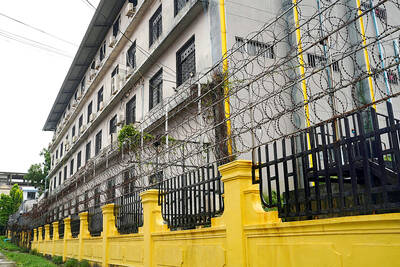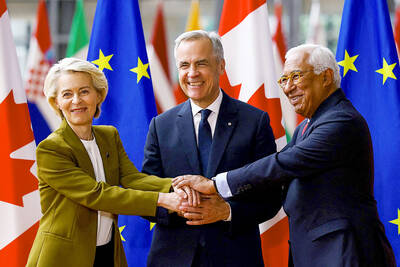Mikeisha Simpson covers her body in a greasy white cream and bundles up in a track suit to avoid the fierce sun of her native Jamaica, but she’s not worried about skin cancer.
The 23-year-old resident of a Kingston ghetto hopes to transform her dark complexion to a cafe-au-lait-color common among Jamaica’s elite and favored by many men in her neighborhood. She believes a fairer skin could be her ticket to a better life. So she spends her meager savings on cheap black-market concoctions that promise to lighten her pigment.
Simpson and her friends ultimately shrug off public health campaigns and reggae hits blasting the reckless practice.
“I hear the people that say bleaching is bad, but I’ll still do it. I won’t stop ’cause I like it and I know how to do it safe,” said Simpson, her young daughter bouncing on her hip.
People around the world often try to alter their skin color, using tanning salons or dyes to darken it or other chemicals to lighten it. In the gritty slums of Jamaica, doctors say the skin lightening phenomenon has reached dangerous proportions.
“I know of one woman who started to bleach her baby. She got very annoyed with me when I told her to stop immediately and she left my office. I often wonder what became of that baby,” said Neil Persadsingh, a leading dermatologist in Jamaica.
Most Jamaican bleachers use over-the-counter creams, many of them knockoffs imported from West Africa. Long-term use of one of the ingredients, hydroquinone, has long been linked to a disfiguring condition called ochronosis, which causes a splotchy darkening of the skin. Doctors say abuse of bleaching lotions has also left a web of stretch marks across some Jamaicans’ faces.
In Japan, the EU and Australia, hydroquinone has been removed from over-the-counter skin products and substituted with other chemicals because of concerns about health risks. In the US, over-the-counter creams containing up to 2 percent hydroquinone are recognized as safe and effective by the US Food and Drug Administration (FDA). A proposed ban by the FDA in 2006 fizzled.
Lightening creams are not effectively regulated in Jamaica. Even roadside vendors sell tubes and plastic bags of powders and ointments from cardboard boxes stacked along sidewalks in market districts.
“Many of the tubes are unlabeled as to their actual ingredients,” said Richard Desnoes, president of the Dermatology Association of Jamaica.
Hardcore bleachers use illegal ointments smuggled into the Caribbean country that contain toxins like mercury, a metal that blocks production of melanin, which give skin its color, but can also be toxic.
Some impoverished people resort to homemade mixtures of toothpaste or curry powder, which can stain skin with a yellowish tint.
The Jamaican Ministry of Health does not have data on damage caused by skin-bleaching agents, though dermatologists and other health officials say they have been seeing more cases.
Eva Lewis-Fuller, the ministry’s director of health promotion and protection, is redoubling education programs to combat bleaching in this predominantly black island of 2.8 million people, where images of fair-skinned people predominate in commercials for high-end products and in the social pages of newspapers.
“Bleaching has gotten far worse and widespread in recent years,” she said. “[Bleachers] want to be accepted within their circle of society. They want to be attractive to the opposite sex. They want career opportunities, but we are saying there are side effects and risks. It can disfigure your face.”
Health officials are running warnings on local radio stations, putting up posters in schools, holding talks and handing out literature about the dangers, but a similar anti-bleaching campaign in 2007 called “Don’t Kill the Skin” did nothing to slow the craze.
The bleaching trend is sparking a growing public debate. Even dancehall reggae hits celebrate the practice, or condemn it.
The most public proponent of bleaching is singing star Vybz Kartel, whose own complexion has dramatically lightened in recent years.
His song Look Pon Me contains the lines: “Di girl dem love off mi brown cute face, di girl dem love off mi bleach-out face.”
Kartel, whose real name is Adijah Palmer, insists that skin bleaching is simply a personal choice, like tattooing.
Christopher A.D. Charles, an assistant professor at Monroe College in New York City who has studied the psychology of bleaching, said many young Jamaicans perceive it “as a modern thing, like Botox, to fashion their own body in a unique way.”
However, others say it raises awkward questions about identity and race.
“If we really want to control the spread of the skin-bleaching virus, we first have to admit that there’s an epidemic of color prejudice in our society,” said Carolyn Cooper, a professor of literary and cultural studies at the University of the West Indies, writing in the Jamaica Gleaner newspaper.
Felicia James, a 20-year-old resident of the Matthews Lane slum, said skin bleaching just makes her feel special, like she’s walking around in a spotlight. She was taught to bleach by her older sister and her friends.
“It’s just the fashionable thing to do. After I bleach, I’m cris,” she said, using a Jamaican term for cool. “Plus, a lot of the boys are doing it now, too.”

Drug lord Jose Adolfo Macias Villamar, alias “Fito,” was Ecuador’s most-wanted fugitive before his arrest on Wednesday, more than a year after he escaped prison from where he commanded the country’s leading criminal gang. The former taxi driver turned crime boss became the prime target of law enforcement early last year after escaping from a prison in the southwestern port of Guayaquil. Ecuadoran President Daniel Noboa’s government released “wanted” posters with images of his face and offered US$1 million for information leading to his capture. In a country plagued by crime, members of Fito’s gang, Los Choneros, have responded with violence, using car

The team behind the long-awaited Vera Rubin Observatory in Chile yesterday published their first images, revealing breathtaking views of star-forming regions as well as distant galaxies. More than two decades in the making, the giant US-funded telescope sits perched at the summit of Cerro Pachon in central Chile, where dark skies and dry air provide ideal conditions for observing the cosmos. One of the debut images is a composite of 678 exposures taken over just seven hours, capturing the Trifid Nebula and the Lagoon Nebula — both several thousand light-years from Earth — glowing in vivid pinks against orange-red backdrops. The new image

CYBERCRIME, TRAFFICKING: A ‘pattern of state failures’ allowed the billion-dollar industry to flourish, including failures to investigate human rights abuses, it said Human rights group Amnesty International yesterday accused Cambodia’s government of “deliberately ignoring” abuses by cybercrime gangs that have trafficked people from across the world, including children, into slavery at brutal scam compounds. The London-based group said in a report that it had identified 53 scam centers and dozens more suspected sites across the country, including in the Southeast Asian nation’s capital, Phnom Penh. The prison-like compounds were ringed by high fences with razor wire, guarded by armed men and staffed by trafficking victims forced to defraud people across the globe, with those inside subjected to punishments including shocks from electric batons, confinement

Canada and the EU on Monday signed a defense and security pact as the transatlantic partners seek to better confront Russia, with worries over Washington’s reliability under US President Donald Trump. The deal was announced after a summit in Brussels between Canadian Prime Minister Mark Carney and European Commission President Ursula von der Leyen and European Council President Antonio Costa. “While NATO remains the cornerstone of our collective defense, this partnership will allow us to strengthen our preparedness ... to invest more and to invest smarter,” Costa told a news conference. “It opens new opportunities for companies on both sides of the